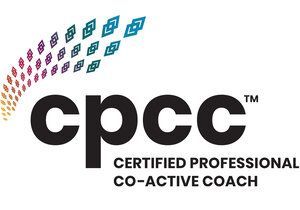Perimenopause, Self-Esteem, and Your Relationships: How Therapy Can Help

Perimenopause is something that’s rarely talked about and even less understood. This is the time in a woman's life BEFORE Menopause (defined as the cessation of menstruation for at least 12 months), and this is actually when most of the big changes are happening. Even more surprising? That most women over 35 are already in perimenopause, even if they don’t show significant symptoms, this coincides with a woman's drop in fertility.
Perimenopause isn’t just about hot flashes and irregular periods. It’s a deeply personal transformation that can shake your confidence, impact your relationships, and make you question your sense of self. I know this not just as a psychotherapist but also as a yoga master, health coach, and the creator of YogaPause (and author of best-selling book by the same name)—a method I developed after years of working with women navigating this life stage.
I’ve spent over two decades guiding women through transitions, and I’m currently writing my research thesis on self-esteem and relationships in women aged 40-55. I see more clearly than ever how perimenopause can challenge our identity. The good news is that you don’t have to go through it alone. Therapy can help you navigate the changes, build your confidence and reframe what you want from life going forward.
How Getting Older Affects Your Self-Esteem
Perimenopause has a sneaky way of making us question ourselves. It stirs up emotions, shifts our bodies in ways we don’t always recognize, and brings up thoughts like: Who am I now? Do I still matter? What the hell am I going to do with my life now?
Here are some of the things that could be chipping away at your self-esteem:
1. Your Body Doesn’t Look The Same
Suddenly, the body you’ve known for decades starts to feel foreign. Weight gain, bloating, thinning hair, dry skin—these changes can make you feel very self-conscious. Many of us look in the mirror and don’t recognize ourselves, we’re self-critical and insecure.
2. Brain Fog
Ever walked into a room and forgotten why? Or struggled to remember someone’s name mid-conversation? Perimenopause can bring cognitive shifts that leave us feeling less than sharpand doubting our abilities. When you start second-guessing yourself, your confidence takes a big hit.
3. Emotional Sensitivity and Self-Doubt
Mood swings, irritability, and feeling emotionally raw are all common. One moment, you feel fine; the next, you're in tears over an advert with an injured hedgehog. When your emotions become unpredictable, it’s easy to start doubting yourself and feeling like you’re “too much” or “not enough.”
4. Women Are Supposed To Be Young FOREVER
Society isn’t always kind to women over 40. From media to workplace biases, we get messages that our worth diminishes with age. Many women struggle with feeling invisible, less desirable, or irrelevant—especially in their careers and relationships.
This Is How Perimenopause Can Impact Your Relationships:
When our self-esteem starts to waver, our relationships feel the strain. I see this time and again in the women I work with. They tell me: I don’t feel connected to my partner anymore. I feel lonely, even when I’m surrounded by people.
Here’s some of the ways perimenopause could be affecting your relationships:
1. You’re Pulling Away From Your Partner
If you’re feeling low about yourself, it’s easy to pull away—emotionally and physically. Changes in your libido, body image worries, and mood fluctuations can lead to less intimacy and more misunderstandings.
2. Your Grumpy and Irrational
Hormonal changes can make emotions feel bigger than normal: Think PMS on Steroids. Small things that never bothered you before suddenly feel overwhelming. If you find yourself snapping at loved ones or feeling unheard, you’re not alone and it’s normal.
3. You Feel Alone In This
Many women say, No one understands what I’m going through. This feeling can lead to withdrawing from social circles, avoiding deep conversations, or even drifting away from close friends. Perimenopause is REAL and big and challenging and you need to be supported by other women who understand and can relate.
4. Changing Family Roles
At this stage of life, many of us are also dealing with our kids growing up and leaving home, ageing parents, or career transitions. All of these stressors can add to feelings of overwhelm, and lack of purpose or sense of self, making it even harder to prioritize relationships.
How Therapy Can Help You Figure Out Who You Are AndWhat You Want From Life 40+
Here’s something I want every woman to hear: You are not losing yourself. You are evolving.Therapy can help you navigate this transition with self-compassion, clarity, and confidence. 40+ can be the best stage of your life - you just need to approach it in the right way.
1. It Can Help You Rebuild Your Self-Esteem
Therapy helps you challenge the negative self-talk that can come with ageing. It’s about shifting the focus from what’s changing to what’s still strong within you - or better yet, what’s STRONGER. Learning to redefine beauty, value, and self-worth is an essential part of this process.
2. Understanding and Managing Your Emotions
Cognitive Behavioral Therapy (CBT), mindfulness, and breathwork can be powerful tools for managing hormonal mood swings, anxiety, and self-doubt. In my practice, I often integrate yoga and breathwork and nutrition alongside psychotherapy to help women create a mind-body connection that fosters emotional balance. A full life approach is the most effective way to move forward into this next life stage.
3. Strengthening Your Relationships
Does your marriage have a whole new range of issues? Feeling disconnected from friends? Therapy can help you identify how your self-esteem impacts your relationships and help you communicate what you need and how you’re feeling with confidence.
4. Accepting Your Changing Body
Instead of seeing physical changes as losses, therapy can help shift the narrative to self-acceptance. My YogaPause method combines gentle movement, breathwork, and mindfulness to reconnect women with their bodies in a way that feels empowering rather than defeating. Building physical strength and mental resilience are an essential part of the journey.
5. Finding a New Sense of Purpose
Perimenopause isn’t an ending—it’s also a beginning. Many women feel lost in this transition, but therapy can help them rediscover passions, set new goals, and redefine what fulfillment looks like in this next chapter. This can absolutely be the best time of your life.
You Deserve Support
Perimenopause is more than a biological transition—it’s an emotional, psychological, and deeply personal one. It can feel overwhelming, but help is available.
Therapy provides a space to rediscover yourself, strengthen your relationships, and step into this new life phase with confidence. If you’re feeling lost, struggling with self-esteem, or noticing strain in your relationships, reach out. You are not alone.










